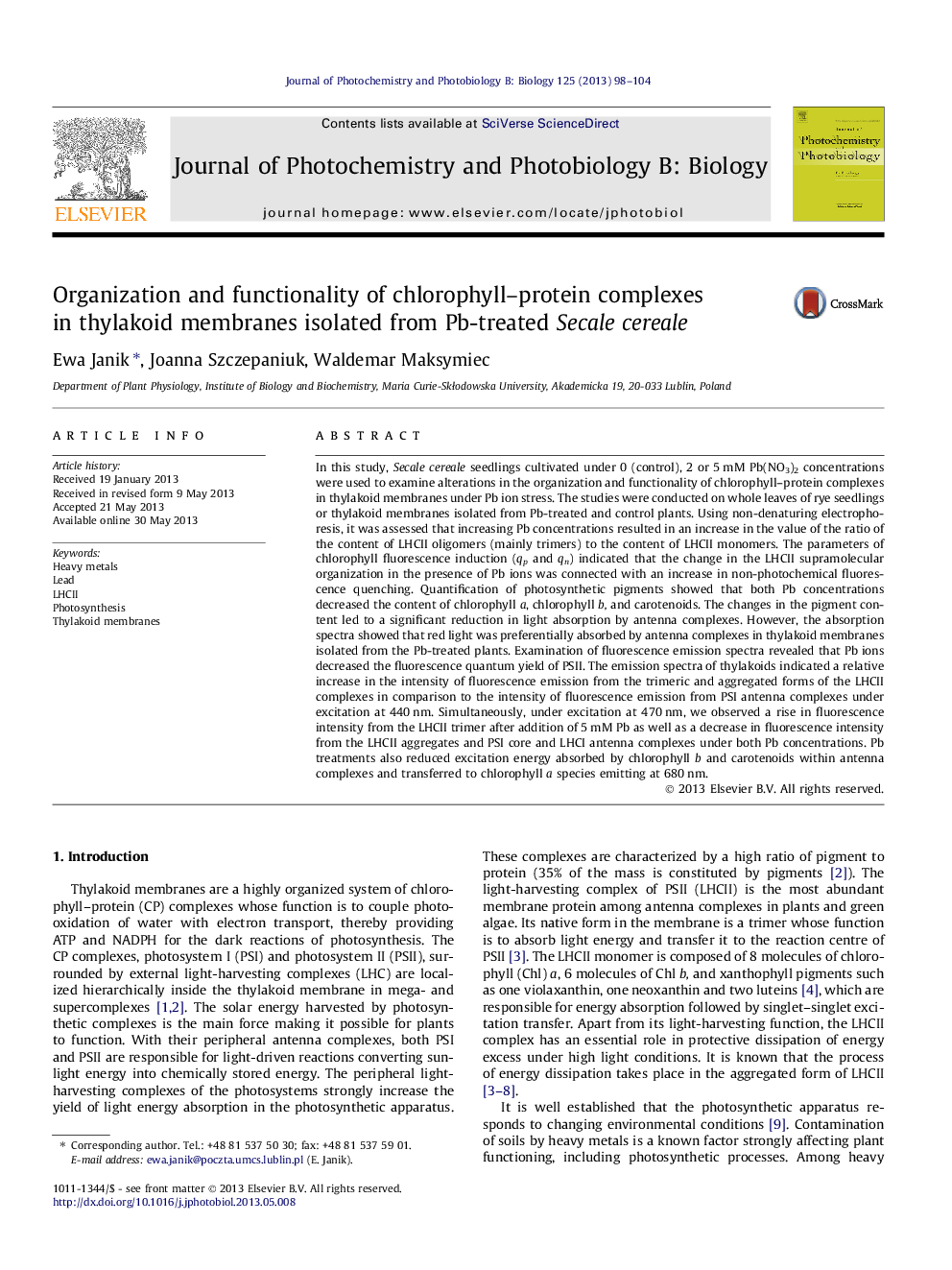| کد مقاله | کد نشریه | سال انتشار | مقاله انگلیسی | نسخه تمام متن |
|---|---|---|---|---|
| 30537 | 44485 | 2013 | 7 صفحه PDF | دانلود رایگان |

• We study the organization and functionality of chlorophyll–protein complexes within the thylakoid membrane under Pb stress.
• Pb ions increase the content of LHCII monomers in comparison to LHCII oligomers (mainly trimers).
• Pb stress diminishes the photosynthetic pigment pool in the thylakoid membrane.
• The efficiency of light absorption and energy transfer within antenna complexes changes under Pb presence.
In this study, Secale cereale seedlings cultivated under 0 (control), 2 or 5 mM Pb(NO3)2 concentrations were used to examine alterations in the organization and functionality of chlorophyll–protein complexes in thylakoid membranes under Pb ion stress. The studies were conducted on whole leaves of rye seedlings or thylakoid membranes isolated from Pb-treated and control plants. Using non-denaturing electrophoresis, it was assessed that increasing Pb concentrations resulted in an increase in the value of the ratio of the content of LHCII oligomers (mainly trimers) to the content of LHCII monomers. The parameters of chlorophyll fluorescence induction (qp and qn) indicated that the change in the LHCII supramolecular organization in the presence of Pb ions was connected with an increase in non-photochemical fluorescence quenching. Quantification of photosynthetic pigments showed that both Pb concentrations decreased the content of chlorophyll a, chlorophyll b, and carotenoids. The changes in the pigment content led to a significant reduction in light absorption by antenna complexes. However, the absorption spectra showed that red light was preferentially absorbed by antenna complexes in thylakoid membranes isolated from the Pb-treated plants. Examination of fluorescence emission spectra revealed that Pb ions decreased the fluorescence quantum yield of PSII. The emission spectra of thylakoids indicated a relative increase in the intensity of fluorescence emission from the trimeric and aggregated forms of the LHCII complexes in comparison to the intensity of fluorescence emission from PSI antenna complexes under excitation at 440 nm. Simultaneously, under excitation at 470 nm, we observed a rise in fluorescence intensity from the LHCII trimer after addition of 5 mM Pb as well as a decrease in fluorescence intensity from the LHCII aggregates and PSI core and LHCI antenna complexes under both Pb concentrations. Pb treatments also reduced excitation energy absorbed by chlorophyll b and carotenoids within antenna complexes and transferred to chlorophyll a species emitting at 680 nm.
Journal: Journal of Photochemistry and Photobiology B: Biology - Volume 125, 5 August 2013, Pages 98–104